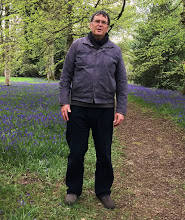God was a teacher. Jesus was a teacher. The Old Testament is
full of God teaching his chosen people; from the garden of Eden to the Ten
Commandments and through the prophets and then in the gospels we have the
stories of Jesus teaching in the synagogues. Teaching is important so it is
worth us celebrating teaching and the wider context of education, acknowledging
the contribution that St Giles School and all schools make in the development
of young people.
Back in 1451, I am sure you remember it well! Pope Nicholas V
described education as ‘the profession of hope in the service of others’. The ‘profession
of hope in the service of others’. It is the means by which other people’s
dreams can be stirred up. It is the means of achieving social inclusion,
raising aspirations, equipping people with the skills, techniques and means of
acquiring knowledge to improve their situation. Teaching gives people the
opportunity to shape the future of others – some call it a threshold adventure.
Three years ago I was at our Local Authority’s conference for
school business managers and we were very fortunate to have Sir John Jones talk
to us. Sir John was headteacher of three secondary schools over a 17 year period and has since informed Government policy on
a range of issues related to education including poverty and social inclusion.
He is a straight-talking Mersey-sider with a passion not only for Everton
Football club but he also has a passionate belief in improving the chances of
children through great teaching. He calls great teachers ‘magic weavers’, magic
weavers. They are the people who can get alongside a child, spark a flame and
kindle that small flame into something larger. They are the teachers that you
remember – you remember them not for what they taught you, not the facts or the
learning techniques, but for how they made you feel. Great schools and great
teachers build powerful lifelong memories.
Sir John talks about how creativity can tend to get stifled
by the straight-jacket of a strict curriculum and over-enthusiastic testing
regimes. Children are naturally creative; if you ask a class of six year olds
if they can draw, they will probably all put their hands up but if you ask a
similar class of 11-year olds you might be lucky to get into double figures. There
is a story of how during a visit to a classroom another renowned educator (this
time from Liverpool) asked a young girl what she was doing. “I’m just drawing
God” came the nonchalant reply. “Wow!” said the teacher, “nobody knows what God
looks like.” “Well,” the girl replied, not looking up from the page, “you will
in a minute.” How exciting it would be if we could keep that sort of thinking
and creativity in every child not just in childhood but into adulthood as well.
Teachers and indeed all places of learning do more than just
teach or enable learning; they nurture people, they develop people, they expand
horizons, they guide people, they participate in God’s on-going creation and,
yes, they also admonish. Teachers are like a parent, mentor, coach, carer and lawyer
rolled into one. It seems to me that they have a model in Jesus. A model in God
the Father, we see what God is like by the example of Jesus, by the life he led,
by the way he taught and the things he taught. Teachers and good schools are
co-workers with all of us in trying to help build and establish God’s kingdom here
on earth. The church has a long tradition of providing and promoting education
for all. I pray that it will continue to do so in these challenging times ahead
so that all God’s children, us included, can flourish and grow to be more like
Him who created us.
I want to finish with one more story and a quotation from Sir
John Jones that illustrates the beauty of magic weaving. When Sir Christopher
Wren had been commissioned to build St Paul’s cathedral after the Great Fire of
London, he visited the site in 1671 and observed three brick layers. One was
crouched down, the second was half-standing, while the third was working
feverishly.
“What are you doing?” Wren asked the men.
“Laying bricks,” the first replied.
“Making a living,” answered the second.
The third paused from his labour and explained that he was
helping to build a cathedral and that one day people would come to pray to God
in the cathedral that he had helped to build.
So, remember your magic-weavers, if you can, find them and
thank them for they were not just laying bricks nor earning money, they were helping
to build your cathedral.
May God help each of us to help build someone else’s
cathedral. Amen.

No comments:
Post a Comment